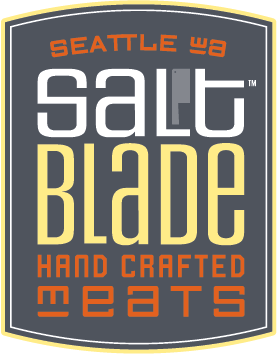How long do your products last?
Salami has an extremely long shelf life when stored properly, but we notice a decline in flavor and quality after about six months (though we have been know to eat them 4 years after production!) If you do not plan to consume the product within a few months of purchase, store it in the refrigerator to slow the aging process. Over time, the brightness of the meat and seasonings fade, and the fat will eventually oxidize. Stored cold, the oxidation will likely not be an issue for a year ore more, but the flavors will still fade over time.
How should I store the salami?
If you plan to consume the salami within a few months of purchase, room temperature storage is fine. If you intend to keep it longer, store it in the refrigerator. Although salami has a long shelf life, it is still a perishable product. Over time the flavors fade and the fats oxidize. Cold storage should allow it to last a year easily, but it won't taste as good as it did in its first six months of existence.
Should I peel the casing?
If you feel like it. The casing is a natural hog casing that is perfectly edible. Some people prefer to peel it, others don't. We generally peel it only if it starts to separate from the salami.
There's mold on my salami. Is it safe to eat?
Although we try to keep our salami free from mold, mold loves to grow on it. White mold can grow while the product is held in storage or shortly after the product is opened. These white molds are the same as the mold on the rind of brie cheese and are completely harmless. If you find them undesirable, you can peel the casing to remove them or use a vinegar soaked paper towel to wipe them clean. If a black mold has grown on your salami, please email us a picture of it using info@saltblade.com. We may be able to tell by visual examination if it’s safe or not. We’ve seen a lot of types of molds over the years, and we always appreciate a good mold photo!
What is the salt content of your salami?
All of our flavors have the same salt content. Each stick, which weighs approximately 110 g, contains 500 mg of salt. At the typical USDA-recommended serving size of 30 g that equates to 136 mg of salt per serving. This statistic is useful for comparison with the labels on other salami as the recommended serving size is standard, but our salami is dried down to a harder consistency than most store-bought salami, thus we typically eat about 20 g as a single serving.
Why do you use sodium nitrate/nitrite?
Short answer: because we love you and we don't want you to die of botulism.
Medium size answer: salami does not exist without nitrites. Curing salts prevent botulism and allow for the formation of nitrosylmyoglobin, which gives cured meats their traditional flavor and color. Celery salt is popular in use these days, but because it contains an unmeasured quantity of nitrites the USDA has required the word "UNCURED" to be placed on the label in the same font size as the product name. Additionally, they require the words "no added nitrites.*" followed by "*except those naturally occurring in celery salt." Both of these naming mechanisms are meant to warn the consumer that this product's safety is not guaranteed. The "natural food" community has caused these warnings to backfire.
At Salt Blade we believe in using the proper amount of nitrites for food safety. Celery salt (which is as far from natural as any chemical you've ever consumed), produces a strange vegetal off flavor in meats. Most producers who use it end up adding far more nitrites to their product than we do. We find the use of celery salt to simultaneously mislead and misinform the public.
For a more detailed explanation, this article summarizes things nicely. If you'd like to talk about it for days on end, come and see Bob in Seattle. He'll be happy to oblige.
